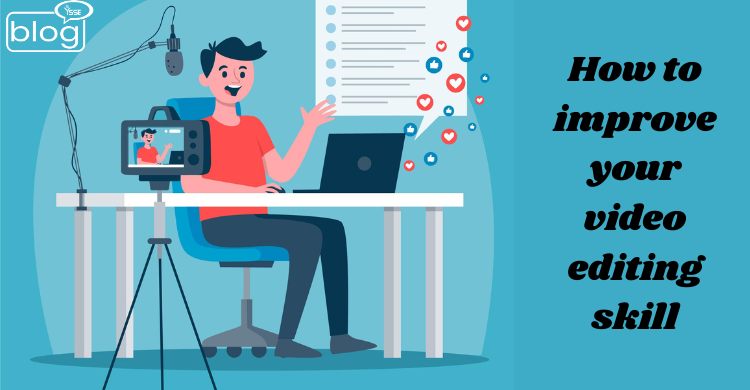Content creation has become a new language for communicating with people. The most important part comes after shooting a video for YouTube or other platforms: “Video Editing.” This is the most processed stage of content creation. In this stage, you will need both creativity and technical knowledge. In this blog, we will try to give you some tips & tricks on improving your video editing skills from good to the best. These tricks will inspire you to make your videos more engaging and productive.
Choosing the right software
The first and vital step in enhancing your video editing skills is to ensure you select the right software. Even though these software packages have the same capabilities for making everyday video edits, some stand out for having great features, interfaces, and accessibility. The secret is to select the editing software that best suits your needs and editing style, allowing you to make decisions based on your preferences and requirements rather than being influenced by the newest and most sophisticated software.
DaVinci Resolve, Final Cut Pro, Avid Media Composer, and Adobe Premiere Pro are some of the best programs available. You may also check out alternatives like Lightworks, Autodesk Smoke, and Sony Vegas. These are less popular but highly capable software.
Use a fast computer
You can use whatever computer brand or model you want; we will not call out war against PCs and Macs as long as it’s fast enough to store huge files and keeps your focus more on video editing rather than slow rendering.
A faster SSD helps you access your files and software more quickly. It also helps load, render, and export videos. Your computer’s memory can be increased to help you edit more quickly. You will need at least 8 GB of RAM if you plan to work professionally or commercially. You should also purchase the processor and video card needed for your installed software.
It is easier to upgrade your PC than an Apple device. You can use some tools on your mobile or iPad, but the flaw is that they provide limited services. The scope and quality are both limited. Take this suggestion; don’t forget about your monitor. Setting up a dual monitor will help you move more quickly, work & organize with a large amount of footage.
Watch video editing tools
YouTube, blogs, and educational websites offer thousands of video editing tutorials to help you create great content. Most of these tutorials are free, making them accessible for everyone. Websites like Skillshare, LinkedIn, VideoCopilot, etc, are a bundle of videos on specific factors.
Obtain the project file
When following the tutorial, many new video editors prefer to use the same video. This will help beginners learn the steps correctly, and your work will look the same as the other content.
Maintain an efficient workflow
You may have the fastest computer on the planet, but you need to be systematic and organized to become a more efficient editor. First, manage your files and projects in folders that you can use repeatedly.
You can also store your footage on external hard drives, which will help you clean up your PC memory. To allow faster file transfers, we advise you to select hard drives that can be linked via Thunderbolt or USB 3.0.
Learn important terms
You have to communicate with clients and other editors in this field. In this example, you have to become well-versed in technical language. Individuals unaware of the lingo situation may face difficulties in the first half of a career. So, become aware of these subjects:
Jump cut: To retain visual interest and stay well clear of predictable or dull scenes, remove pieces.
J cut: After the audio, the video comes.
L cut: The video goes ahead of the audio.
Montage: A collection of movies showing the passage of time, usually for the growth or transformation of a character.
Cutting towards action: Instead of cutting after each movement, cut while the subject moves to create a more exciting and seamless scene.
Cutaways: Transitional scenes can establish the meaning, convey the surrounding surroundings and mood, or heighten the dramatic tension without directly addressing the primary subject or action.
Good Music
Don’t limit yourself to aesthetics; your music should be the main attraction. For example, when making a drama film, you’ll want the perfect music or instrumentals to increase the impact of essential moments (where you want to elicit specific feelings from your audience).
Add text and graphics
Other than the title, opening and closing billboards (for broadcasting), and film credits, you might need to add other text depending on the kind of film you’re making. Generally, you want to keep things simple, using a white, sans-serif typeface that isn’t too eye-catching.
Well, these are the tips and tricks for becoming a pro in video editing. This will help you to improve your video editing skills.
Want to read more blogs? Click here
Mostofa Imam
Intern
Content Writing Department
YSSE

